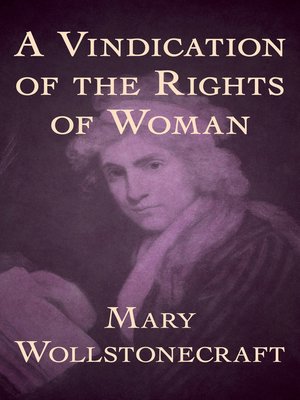
Serious social harm and implications, she continued, would result from limiting the capacities of women and their mental and moral abilities. In her work, Wollstonecraft argued that females should be regarded as full human beings who deserve all the same educational rights as men. While Talleyrand agreed that girls should be educated among their male peers, he suggested they be taught only until the age of eight. She discusses the idea of “woman’s place” within society and reasoned that, instead of simply being regarded as domesticated housewives living in the shadow of their husbands, women could become “companions” to their male counterparts through the means of equal education prove beneficial for all of society.Ī Vindication of the Rights of Woman was initially published in London during the third year of the French Revolution, which had started in 1789 With all eyes on France, Wollstonecraft wrote her introduction as a response to Charles Maurice de Talleyrand-Périgord, a French politician, who had drafted The Vindication of the Rights of Men of 1790, a revised version of the French constitution. Wollstonecraft argued that women are entitled to an equal education, one which aligns with their position among society, as mothers, housewives, and laborers. It is one of the first texts by a female author that presented women’s educational as an issue of universal human rights.

The visionary treatise, A Vindication of the Rights of Woman was published by the English writer Mary Wollstonecraft (1759-1897) in 1792.


 0 kommentar(er)
0 kommentar(er)
